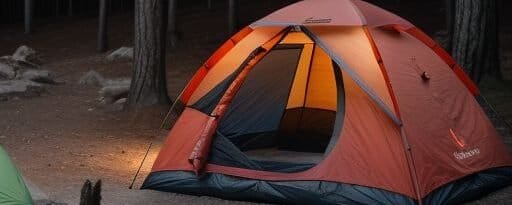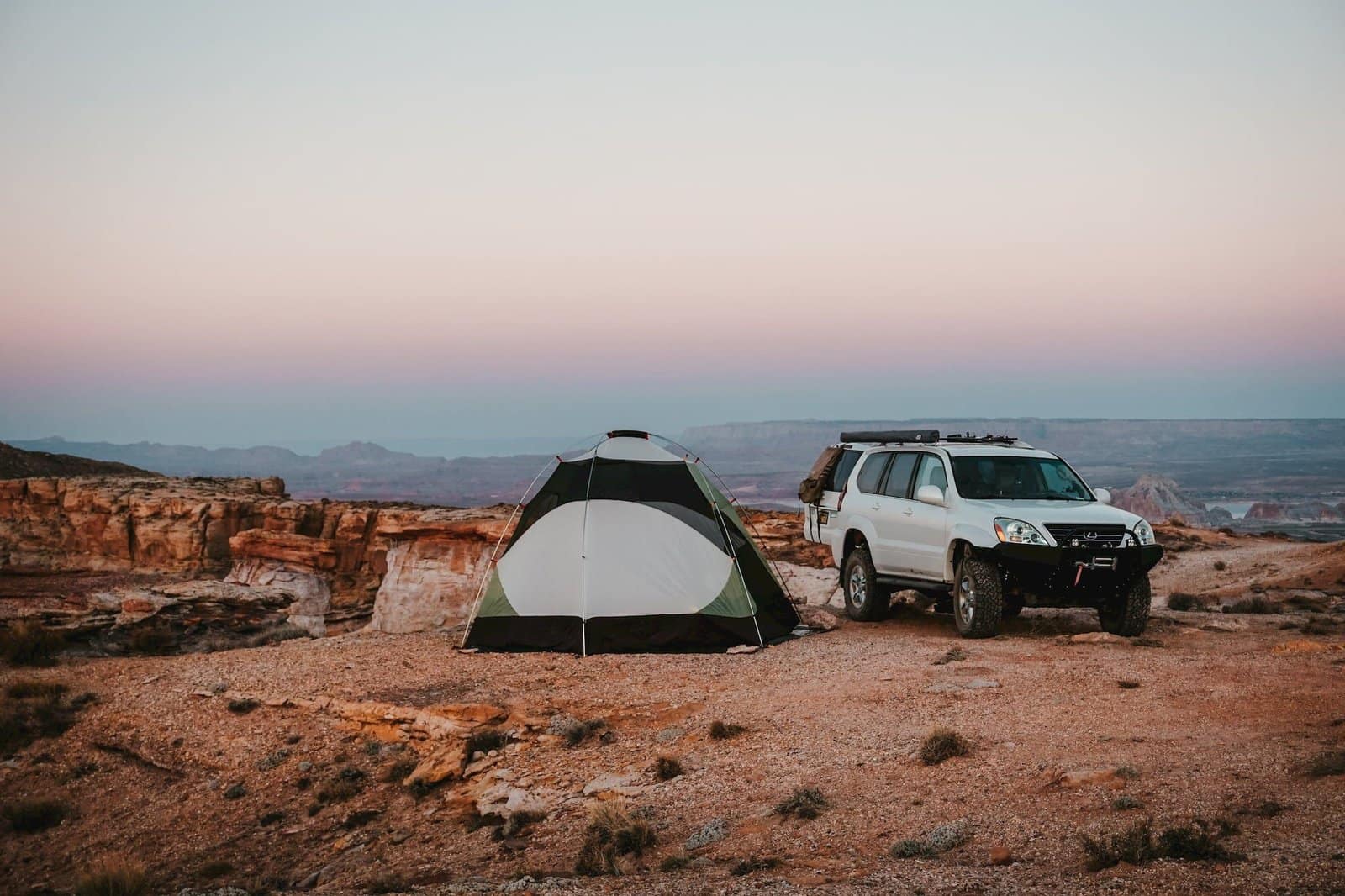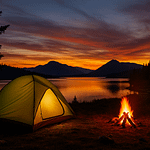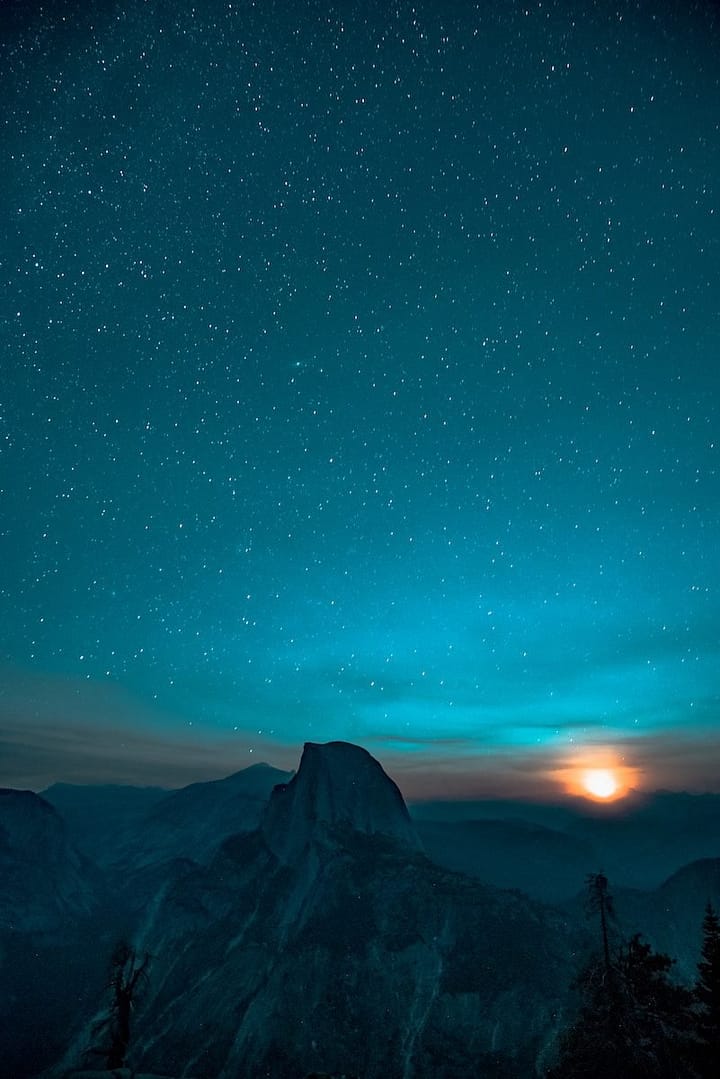What is Dispersed Camping?
What is dispersed camping?
Dispersed camping, also known as free camping or wild camping, is an outdoor activity that allows campers to set up their campsite away from developed campgrounds. Dispersing means not staying in a designated campground with established campsites and amenities such as toilets and fire pits. Instead, dispersed camping is done on public land such as national forests, Bureau of Land Management (BLM) areas and US Forest Service lands. A dispersed camping area may include both primitive camping sites with no facilities and more developed sites with fire pits for cooking. Campers are usually advised to practice Leave No Trace principles when dispersed camping to limit the impact on the environment. In general, it is best to find a spot where you will have little or no effect on the existing vegetation. Dispersed campsites are often located in remote locations far from roads, restrooms or other amenities so campers should plan ahead and come prepared with food, water, and supplies they will need during their stay.
Where Can You Find Dispersed Campsites?
Dispersed campsites, also known as disperse camp, are campsites that are found in public land areas such as national forests and Bureau of Land Management (BLM) lands. They are usually located away from developed campgrounds and offer a more rustic camping experience. To find dispersed campsites, you can look at forest service websites or use online mapping services to locate them. In some cases, a permit may be required for dispersed camping on public land. When you find a place where dispersed camping is allowed, you’ll often find fire pits and other amenities that make camping like home. Recreation areas managed by the BLM often have designated dispersed campsites for camper use. You can also check with your local park or forest ranger station for more information about specific locations where dispersed camping is allowed.
How do I pick a good campsite?
When it comes to picking the perfect campsite, there are a few things to consider. Firstly, do some research and find out what areas are around you that offer camping sites. The Forest Service, BLM (Bureau of Land Management), and other public lands are great places to look for free camping opportunities. If possible, drive on meadows or trails to access new campsites instead of using existing ones – this way you can help preserve the area by leaving no trace. Once you have settled on some potential spots, take a look at the terrain and see if it is suitable for your needs. Make sure there is plenty of shade and that it’s not too close to roads or other campers. Lastly, check for any regulations or permits you might need before setting up camp. With these tips in mind, you should be able to pick a great campsite with ease!
Why Go Dispersed Camping?
Going dispersed camping is a great way to experience nature in its rawest form. It is a type of camping that does not involve staying at an established campsite with facilities such as toilets and running water, but rather involves setting up camp in a location of your own choosing. Dispersed camping has many advantages compared to traditional campsites, the most obvious being the lack of fees associated with staying at these locations. There is also the freedom to choose from a much larger variety of camping locations due to the lack of restrictions that accompany more formal campsites. Additionally, scattered camping makes it easier to get away from large crowds and enjoy more solitude in nature. With all these benefits, it’s no wonder why so many people choose to go dispersed camping!
Ready to Try Dispersed Camping?
Ready to try dispersed camping? Dispersed camping is a great way to get away from the crowds and enjoy nature. It involves camping outside of campgrounds in areas that are accessible by car. This type of camping is usually free and can be found in national forests, on Bureau of Land Management land, and sometimes on state lands. When disperse camping, it’s important to choose a location that is safe and legal, such as an established campsite or an area where campers have left no trace. Before going out, make sure to check the local regulations and restrictions for the area you plan to camp in. If done right, dispersed camping can be a rewarding experience that allows you to connect with nature on a deeper level than traditional campgrounds do.
What is free camping?
Free camping is a great way to experience the outdoors without breaking the bank. It’s essentially camping in a campsite that isn’t part of a developed campground or other paid campsite. Instead, it takes place in an area that is designated for camping, such as a national forest, state park or other public land. These areas provide basic amenities like picnic tables and fire rings, but they generally don’t have any modern facilities like bathrooms or showers. For those who are willing to pack their own supplies and tools, it’s possible to enjoy a camping experience with minimal cost. Campers should also be aware of local rules regarding free camping and make sure to research the area thoroughly before setting up camp. By following responsible camping practices, it’s possible to enjoy free camping while respecting nature and preserving the environment for future generations.
Where can I find free camping?
If you’re looking to find free camping, there are a few options available. National forests and Bureau of Land Management (BLM) land offer dispersed campsites away from developed recreation areas. These sites usually don’t have amenities, but they do provide plenty of room for campers. State parks often offer camping areas with fee-based campsites, but also have some areas that allow free camping. The Forest Service and BLM also provide access to public land for camping near recreation areas, which may come with amenities or require an additional fee. It is important to check the local regulations to make sure the campsite is open and if the area allows for disperse camping. With some research, it is possible to find great free camping spots with all the necessary amenities for a great outdoor experience!
Where Can You Disperse Camp?
Dispersed camping is a great way to explore the outdoors and have an adventure. Disperse campsites are found on public land, such as national forests, state forests and Bureau of Land Management (BLM) land. Campers who want to disperse camp can look for campsites in management areas that are operated by the US Forest Service or BLM. Some rules and regulations may apply when it comes to dispersed camping, but these are generally easy to follow. When looking for a campsite on public land, dispersed campers should always be aware of their surroundings and respect the environment by following Leave No Trace principles. Dispersed camping allows adventurers to enjoy a more remote experience than traditional campgrounds while still having access to some amenities like bathrooms and water sources.
Is Boondocking and Dispersed Camping the Same Thing?
No, boondocking and dispersed camping are not the same thing. Dispersed camping is a type of free camping which occurs on public land, such as BLM (Bureau of Land Management) land or a national forest. It involves camping outside of designated campsites and sometimes requires a short hike to reach the chosen spot. Boondocking, on the other hand, is an activity that includes both dispersed camping and free camping in more remote areas on public lands. This could include BLM land, national forests, or other public lands where you can camp for free with no services or amenities nearby. Both activities provide great opportunities to explore and enjoy beautiful places while avoiding fees at established campsites; however they differ in their focus and approach to outdoor recreation.
Where Can You Go Dispersed Camping?
Dispersed camping is a great way to enjoy the outdoors and get away from crowded campgrounds and developed recreation areas. You can go dispersed camping just about anywhere, as long as you follow the rules and regulations of the area in which you are camping. Dispersed campsites are usually located at least 100 feet away from any developed recreation sites, such as picnic areas, trailheads, and campgrounds. In addition, dispersed camping is typically allowed on most public lands managed by the U.S. Forest Service, provided that you are at least 100 feet away from any water sources or other campsites. This type of primitive outdoor experience offers a unique opportunity to explore nature while still enjoying some degree of comfort and safety. The freedom to roam within a public landscape without the need for designated campsites or facilities makes dispersed camping an attractive option for adventurers looking for an authentic outdoor experience.
What to Bring When Dispersed Camping
When participating in disperse camping, it is important to be prepared for any situation. Dispersed camping offers a truly adventurous experience, but can also come with potential risks. To make sure you’re safe and comfortable on your outdoor adventure, there are some items you should bring when disperse camping. It’s wise to bring a map of the area, plenty of food and water, a first aid kit, a tent or other shelter, and insect repellent. If your campsite has fire pits, you may also want to bring wood and kindling for fires. Additionally, bringing a flashlight or headlamp will allow nighttime visibility if you’re camping without natural light sources like street lights or campfires. Finally, make sure to practice Leave No Trace principles while dispersed camping by properly disposing of your garbage and not leaving anything behind at the campsite when you leave. This way everyone can enjoy the beauty of a pristine dispersed camping site!
Leave No Trace While Dispersed Camping
Dispersed camping is a great way to get away from it all and enjoy the freedom of free camping. However, as any camper knows, it is important to leave no trace when dispersed camping. This means taking all of your trash with you, including human waste. If you have a campfire be sure to dispose of it properly and make sure it is at least 100 feet away from any water source or campsite. Make sure to use existing toilets and toilet paper if available, or bury your human waste at least 100 feet away from any water source. When you are finished with your trip, make sure the area looks better than when you arrived so that others can also enjoy their experience in nature. Leave No Trace While Dispersed Camping is an important rule to follow in order to keep nature clean and beautiful for everyone!
Finding Dispersed Campsites
Finding dispersed campsites in a national forest can be a great way to go camping without the crowds and fees of a developed campsite. Dispersed camping is allowed in many national forests, but it can be difficult to find these sites. The best way to find dispersed campsites is to check with the Forest Service for any regulations or guidelines about dispersed camping in that area, as well as any maps of designated areas. They may also have information about which roads are open for dispersed camping and how to access them. Additionally, you can look online for resources such as websites or forums devoted to finding dispersed campsites. There are even apps out there that can help you locate and plan your trip! Dispersed camping is a great way to explore the outdoors and take advantage of all the natural beauty the national forest has to offer – just make sure you’re following all the rules and regulations when you disperse camp!
Dispersed camping rules
Dispersed camping is a great way for campers to enjoy the outdoors without having to worry about crowds and reservations. Dispersed camping rules vary from National Forest to State Forests, but the most common rules are that you must be at least 150 feet away from any water source, such as a stream or lake. In addition, human waste should be properly disposed of in a toilet or at least 200 feet away from the campsite. Campfires are usually allowed in dispersed camping areas but should be put out completely before leaving the site. When camping on BLM land, you must follow their regulations – usually meaning that no fire rings can be constructed and all supplies must be packed out when you leave. Additionally, it is important to practice “Leave No Trace” ethics while dispersed camping, as there are no developed campgrounds or campsites in these locations. Following these dispersed camping rules will help ensure that everyone can enjoy their outdoor experience with minimal impact on nature!
Dispersed campfire safety
When enjoying a campfire, it is important to practice dispersed campfire safety. Dispersed camping means that you are camping away from an established campsite and you must take extra measures to ensure your campfire is safely extinguished. Before building a fire, take the time to look over the area and make sure that no combustible materials or flammable objects are too close. When starting a fire, use only dry wood and never start one with gasoline or other flammable liquids. Keep the size of the fire small and manageable; this will help keep it under control. Once the campfire is done, be sure to put out any remaining embers by dousing with water and stirring until it turns cold and all embers are extinguished. Finally, always dispose of any remaining ash or charcoal in an appropriate container for disposal at home. Dispersed campfire safety is important for everyone’s safety when enjoying camping in nature.
Backpacking (dispersed camping) in state forests
Backpacking in state forests is a great way to enjoy the outdoors and explore nature. Dispersed camping allows you to camp anywhere on forest land outside of a designated campground. There are many campsites available in state forests that offer a variety of recreational activities, such as fishing, hiking, and biking. When dispersed camping, it’s important to remember to follow the rules and regulations set forth by the state forest. This includes respecting private property boundaries and not disturbing wildlife or vegetation. It’s also important to practice Leave No Trace principles by disposing of waste properly and packing out all trash. Backpacking in state forests is a great way to get away from civilization and experience nature on your own terms with plenty of space for multiple campsites.
Rustic hike-in camping in state parks
State parks provide a great way to explore the outdoors with rustic hike-in camping. Many state parks have primitive campsites that are tucked away in secluded areas with no nearby drive up access. These campsites usually feature basic amenities such as picnic tables and fire rings, but they often lack other conveniences like running water or electricity. It is important to come prepared when camping in a state park, as many campsites don’t even have a toilet! However, if you’re looking for a true wilderness experience, rustic hike-in camping in state parks can be an incredibly rewarding experience. You can enjoy stunning views of natural landscapes and get away from the hustle and bustle of everyday life.
Fees, Licenses, and Permits Required for Dispersed Camping
Dispersed camping is a great way to get outside and experience nature while camping. It involves camping outside of designated campsites on public lands such as Bureau of Land Management (BLM) or National Forest land. While there are no fees associated with dispersed camping, there are some licenses, permits and rules that must be followed in order to camp safely and responsibly. Depending on where you plan to disperse camp, you may need a permit from the BLM or the national forest to do so. You also need to be aware of any local ordinances regarding dispersed camping and follow all rules for the area you’re camping in. Additionally, always practice Leave No Trace Principles whenever you go out into the wilderness. By following these guidelines and obtaining any required permits, you can ensure your safety while enjoying your dispersed camping experience.
The U.S. Forest Service and Dispersed Camping
The U.S. Forest Service is a government agency that oversees the national forests and other public lands in the United States. Dispersed camping is a type of free camping where campers can stay outside of designated campgrounds on forest land, often with no amenities or services provided. It’s important to remember to practice “leave no trace” principles when dispersed camping, including disposing of human waste properly and never leaving a campfire unattended. Campers should also avoid camping in areas which are not designated as campsites, such as near water sources, trails or other sensitive areas. Toilet facilities and water sources are usually not available at dispersed campsites, so campers need to plan accordingly and be prepared with their own supplies and equipment. By following these simple guidelines, dispersed camping can be an enjoyable way for campers to explore the outdoors while respecting the environment around them.
Dispersed Camping Rules in an RV
Dispersed camping, or camping in a location without an established campsite, is an increasingly popular way to explore the outdoors and enjoy nature. Dispersed camping is allowed in most areas, but it is important to follow dispersed camping rules to ensure that you are respecting the environment and leaving no trace of your stay. Be sure to check local fire restrictions when planning your trip and always adhere to Leave No Trace principles such as packing out all of your trash, avoiding disturbing wildlife, and not cutting down any trees or foliage. Additionally, make sure to properly extinguish any campfires upon leaving the area and never leave them unattended. Adhering to these dispersed camping rules not only helps protect the environment but also ensures that others can enjoy their time in nature as much as you have.








